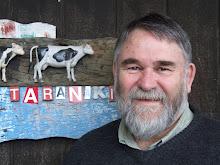Ideas do not magically appear in a genius' head from nowhere. They almost always build on what came before. And creative collaboration is key. If you want to become more creative look at what others in your field are doing. Brainstorm with people in different fields.
"But even as the lone hero continues to gallop through our imaginations, shattering obstacles with silver bullets, leaping tall buildings in a single bound, we know there is an alternate reality. Throughout history, groups of people, often without conscious design, have successfully blended individual and collective effort to create something new and wonderful. The Bauhaus school, the Manhattan Project, the Guaneri Quartet, the young filmmakers who coalesced around Francis Ford Coppola and George Lucas, the youthful scientists and hackers who invented a computer that was personal as well as powerful, the creators of the Internet--these are a few of the Great Groups that have reshaped the world in very different but enduring ways." according to Warren Bennis and Patricia Ward Bierderman in their collaborative book Organising Genius: The Secret of Collaboration
My most recent experience of creative collaboration is not quite so grand. Over the years I have been to a large number of music festivals - where people who follow a range of musical persuasions gather. Most festivals have an exercise in creative collaboration called the Blind Date Concert. The most recent was at a festival at Te Rangi in the Hawkes Bay region of New Zealand where the photos were taken. Te Rangi is the home of two very talented friends - Mary Kippenberger - storyteller, and Peter Charlton-Jones - musician. www.storylink.co.nz
The Blind Date Concert - and exercise in creative collaboration
The objective of this exercise - to prepare and perform an item using the talents of all the participants in a group the members of which are randomly chosen..
The process works something like this:
 Peoples names are put into a hat - whether they want to take part or not. These are then randomly drawn out and posted - and tweaked just to ensure some balance. After much moaning and groaning and checking out to see what talent you have in your group people are given a limited amount of time to combine their talents into a performance. All age ranges are included.
Peoples names are put into a hat - whether they want to take part or not. These are then randomly drawn out and posted - and tweaked just to ensure some balance. After much moaning and groaning and checking out to see what talent you have in your group people are given a limited amount of time to combine their talents into a performance. All age ranges are included.  Each group then does what ever it needs to do to present their performance. This involves deciding on what the item will be - song, dance, drama or combination of all three, identifying who can do what and deciding what roles or instruments people will play - and practice. At this stage a leader or facilitator may emerge, conflict may have to be addressed, people influenced, contributions acknowledged and decisions made. All this in a two hour time frame!!
Each group then does what ever it needs to do to present their performance. This involves deciding on what the item will be - song, dance, drama or combination of all three, identifying who can do what and deciding what roles or instruments people will play - and practice. At this stage a leader or facilitator may emerge, conflict may have to be addressed, people influenced, contributions acknowledged and decisions made. All this in a two hour time frame!! Then its performance time. The most remarkable thing is you take a whole bunch of random people [many of whom have never met before], a very short time frame, a huge range of ages, talent and ability and throw them together with the loose instruction - deliver a performance - and what do you get: performances that are highly entertaining and fun and always appreciated by the audience. The Blind Date never fails!!
Then its performance time. The most remarkable thing is you take a whole bunch of random people [many of whom have never met before], a very short time frame, a huge range of ages, talent and ability and throw them together with the loose instruction - deliver a performance - and what do you get: performances that are highly entertaining and fun and always appreciated by the audience. The Blind Date never fails!!
"The next 10 years will require people to think and work across boundaries into new zones that are totally different from their area of expertise. They will not only have to cross boundaries, but they will have to identify and make connections between them." So says designer Clement Monk. Just like a Blind date Concert!!
If that is the case I'd be happy to travel the world facilitating Blind Date Concerts - or at least applying the concept. Give me a call!!

An impressive blog - will return often!! Bruce
ReplyDelete